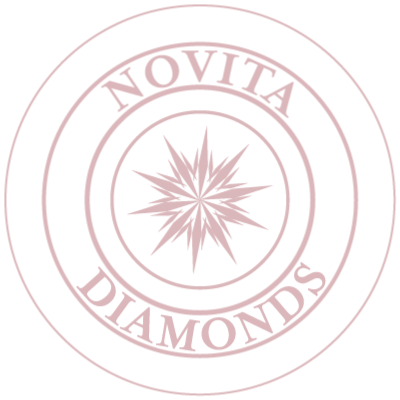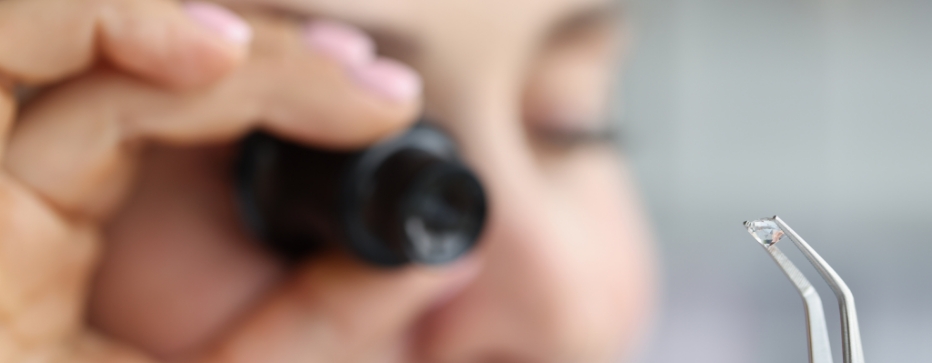BOOK AN APPOINTMENT


Crating a true diamond in the lab has fascinated scientists and engineers since the late 1800s. However, it was nothing but a pipe dream until 1955 when General Electrics proved that it was finally possible to create a fully lab grown diamond. Nevertheless, these diamonds were far a far cry from the diamonds people were used to as they were small and of very low quality. Lab grown diamonds would continue to be of inferior stock and unsellable for a further half-century, only finding use in an industrial setting. That would all soon change with the turn of the millennium when the technology required to grow diamonds advanced enough to create true gem like diamonds reliably and of high quality.
Forces of nature grow a diamond from the earth over a very long time; they are created through incredibly high heat and pressure over thousands of years. A lab mimics those conditions but speeds up the process considerable to create a lab grown diamond.
A mined diamond and its lab grown counterpart are completely indistinguishable from each other; even the best gemmologist cannot tell them apart since lab grown diamonds share the same molecular and chemical composition of their mined equivalent and, therefore, the same physical and optical properties. The same cannot be said of any of the knockoff diamond simulants or imitations. Let's delve a bit more into what makes a diamond truly a diamond and not an imitation. In the simplest terms, diamonds are pure carbon given a unique sold form, which is only one of the several different forms of carbon solid that can occur depending on their type of chemical bonds, known as allotropes. The crystalline form of carbon allotropes is diamonds, making them one of the only gems of a single element, typically about 99.95% carbon. The other 0.05% may include trace elements, atoms of other elements, such as boron and nitrogen, that are not essential to the chemistry or the structure of a diamond but nevertheless play a part in influencing the shape or colour of a diamond. Both mined and Lab grown diamonds have these trace elements naturally through their creation process, such as radiation exposure.
The only difference, and not a small one at that, between Lab grown diamonds and mined ones, is the price. The cost of lab grown diamonds is, on average, an astonishingly 75% cheaper than mined diamonds. Contrary to misinformation intentionally spread online, the price difference is not due to a difference in quality. Instead, it results from the healthy competition between labs producing Lab grown diamonds, compared to unhealthy anti-consumer monopolies that have dominated mined diamonds for so long. To put the price difference in perspective, if a mined diamond were to cost $10,000, a Lab grown diamond of equal characteristics and quality would cost around $3,000, bringing truly massive savings for customers.

Like other pure elements like copper or iron, mined diamonds are inherently untraceable. On the contrary, a lab grown diamond can always be traced back to the source lab that created it. The harsh reality of mined diamonds is that despite the convincing claims by the diamond companies, with reassuring terms as "clean origin" or "conflict free", the true origins of a mined diamond can never really be confirmed with any degree of certainty. In essence, all the claims to the contrary amount to nothing more than marketing buzzwords to reassure customers, since earth-mined diamond changes hands at least 30-40 times, from its extraction out the mines to its final sale.
Diamonds are graded using the 4Cs - Colour, Clarity, Cut, and Carat. This grading system was first created by Robert M. Shipley, founder of the Gemmological Institute of America (GIA). As lab grown and mined diamonds are identical, they are graded using the exact same universal grading system, the 4Cs, using identical methods and tools. Once again, there are no differences between lab grown diamonds and mined diamonds except in price.
Lab grown diamonds and mined diamonds can be graded and certified by any laboratory. In terms of certification, there is absolutely no difference; you will find the same type of information in both certificates. The only text field to differentiate lab created ones from mined diamonds is that the certificate of a lab created diamond will contain an indication such as "Laboratory-grown" or "Laboratory-created" for clarification purposes.
Ethical versus Unethical is a topic dear to us and many others in the industry and beyond. This question is the fundamental reason why we chose to deal with lab grown exclusively and not mined diamonds.
Diamond mining is, unfortunately, is proven over and over to harm not only the environment but also the people who mine them as well. The human cost of extracting a conflict diamond out of the ground is unfathomably enormous. Whole populations are displaced and harmed through the mining process, including miners, many of whom are enslaved people, their children, families, and the wider community. Even disregarding the human cost, mining for diamonds, or any stones for that matter, requires an unbelievable amount of earth to be cut open and sifted through. To give a rough idea of the scale of mining, a 1 carat of gem-quality diamond requires the digging up of 400 tonnes of dirt/ore. Blowing up and digging up mountains worth of earth to find a single small stone naturally results in the destruction of so much habitable land that whole communities and ecosystems are wiped out.
Destruction of the earth is not the only result of mining. The mining process also requires a massive amount of energy which are almost always exclusively derived from fossil fuels. The carbon emissions from this industry are immense and almost always underreported, if at all. In addition, a variety of toxic chemicals are continuously mixed with water, often from groundwater aquifers, for use in processing ores and cleaning gems like diamonds. The toxic slurry is then unceremoniously dumped on the previously fertile land, thereby all but guarantying soil contamination. Essential drinking water sources like a river or a pond and, more importantly, groundwater are rendered unfit for human or animal consumption. It is not surprising then that we take the debate of Ethical versus Unethical very seriously as a young and responsible company. We cannot allow ourselves to be a party to the destruction of the earth and its inhabitants; therefore, we will always provide our customers only with the most ethical and sustainable products.

Rough to Retail is an industry term referring to the full range of steps in the lifecycle of a diamond. It starts with the unearthing of a mined diamond OR the creation of a lab grown diamond, as a rough stone, till they are sold to an end customer after entering the retail market. Lab grown diamonds and mined ones have the same From Rough to Retail since rough diamonds of either origin, lab grown or mined, are Sorted, Cut, Polished, Graded and, eventually, Certified in precisely the same way. Since all the intervening processes and costs involved are exactly the same, there is absolutely no difference between the Rough to Retail of either mined or lab grown diamonds.
One interesting fact to note is that, on average, man made diamonds are more suitable for ideal/excellent Cut grade than mined diamonds. Because mined diamonds come in all shapes and sizes, they are shaped/cut to maximise their yield as much as possible, prioritising ct weight above all else. Grown diamond, on the other hand, will be cut with the sole intention of producing the most ideal cut and, on average, will result in stones of a superior cut grade as they are specifically cultured to be grown in a more ideal shape for cutting down into a gem.
